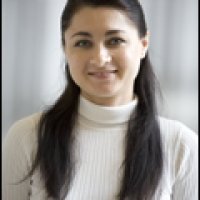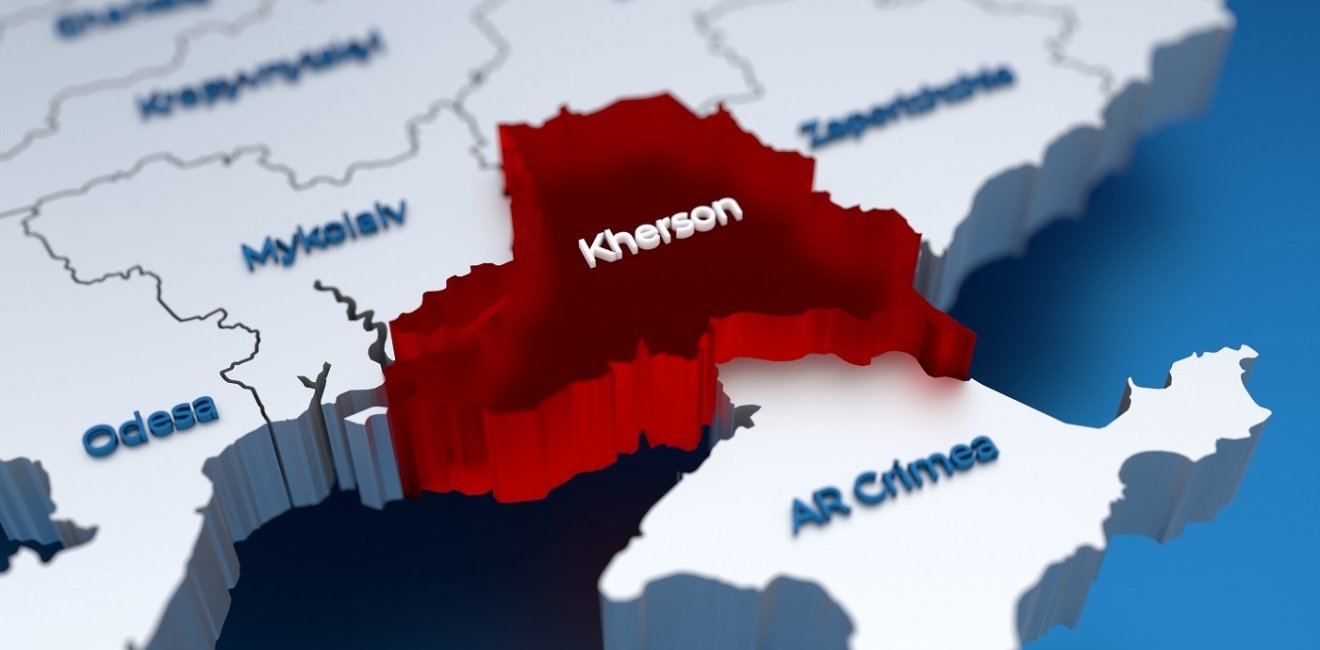
A blog of the Kennan Institute
BY NATALIA KUDRIAVTSEVA
On February 24, 2022, the troops of the Russian Federation launched a military assault on Ukraine, advancing across its northern, eastern, and southern borders and starting a full-scale war. Kherson oblast, which borders the annexed Crimean Peninsula to the south, has been occupied by Russian troops since the very first day of the war, and the regional center of Kherson was besieged that same day, which prevented the evacuation of noncombatants. On March 1, Russian troops attacked the city of Kherson, killing the local border guards, members of Ukraine’s Territorial Defense units, and dozens of civilians.
Since then, the people of Kherson and the wider region have been living under occupation and daily face the risk of being kidnapped and violently killed by the “Rosgvardia”—the Russian military police troops.
The occupation has unfolded in two parallel dimensions. The first is symbolic, where the “liberation” of Russian speakers in Ukraine is being playacted. This show includes the occasional distribution of humanitarian aid and the hoisting of Russian and red Soviet “victory” flags—the latter associated with victory in World War II—over major administrative buildings, as well as the resurrection of a Lenin statue in Nova Kakhovka, the administrative center of Kakhovka raion (district), part of Kherson oblast.
This role-playing has also involved the proclamation of a new governmental body, the Committee for Peace and Order, announced in March, shortly after the beginning of the occupation, and consisting of local pro-Russian politicians and the Russian occupiers themselves. A local pro-Russian mayor, Oleksandr Kobets, and the head of Kherson oblast administration, Volodymyr Saldo, were appointed in April. Their activities have so far been limited to a few brief appearances on Russian TV.
In early May the deputy head of the Russian-controlled administration, a local pro-Russian blogger named Kyrylo Stremousov, announced plans to request that Moscow annex Kherson oblast without a public vote. Two staged parades celebrating Kherson’s 1944 liberation from the German troops, on March 13, and Soviet Victory Day, on May 9, furthered this symbolic dimension of the occupation. So have intentions to introduce the Russian ruble as the major currency of the occupied territories of Ukraine.
In the second dimension, the one not shown on Russian TV, “liberation” takes the form of repressive measures, with mass purges and food confiscations, as in Stalin’s time. Russian forces have been kidnapping and torturing local public officials and journalists who reported on the realities of the occupation, and those Ukrainians who had previously served in the Ukrainian defense forces in the Donbas.
To suppress resistance in the occupied territories, the Russians have been capturing local activists and public intellectuals and forcing them to yield to the occupation regime and publicly declare a pro-Russian stand. To intimidate and terrorize the population, the Russian military has created a humanitarian crisis in Kherson city and the wider region by barring entry for vehicles carrying food and medicine and Ukrainian humanitarian convoys.
Four hundred tons of grain have been stolen by Russia from occupied Ukraine, including from Zaporizhzhia oblast and the Donbas. Russians have also been stealing farm equipment and targeting food storage sites and silos with their missiles in an apparent attempt to engineer a famine, which evokes the memory of the Holodomor, the Terror-Famine organized by Joseph Stalin in the same territories. This time, however, other parts of the world are also affected.
In protest against the Russian invasion, more than 40 percent of the population has left Kherson, even at the risk of being robbed, detained or even killed at Russian checkpoints, since there is still no official evacuation corridor provided for this part of Ukraine.
Resistance has nevertheless been strong in Kherson and Ukraine’s occupied southern regions. The first public protest took place in Kherson in early March, just a few days after the Russian military took control of the city. It drew around 2,000 people who chanted and waved Ukrainian flags. This protest was quickly followed by similar rallies in other towns and villages of the oblast, where residents have explicitly shown Russian occupiers that their land is Ukraine.
The protesters have continued to demonstrate, despite the risks and attempts to disperse them as the occupying forces tightened their grip on Kherson. The pro-Ukrainian mayor, Ihor Kolykhaiev, had been managing the city until Russian forces seized the city council building and drove him out. Still, he has remained in Kherson, working remotely, since he has refused to cooperate with the new Russia-backed administration.
To protest against the pro-Russian rule and an illegitimate referendum, Kherson residents gathered for a peaceful rally again on April 27 but were dispersed by Russian troops, with four people injured. Kherson medical workers have protested by refusing to go into their usual workplaces so as not to have to treat Russian soldiers or give any other assistance to the occupiers. There have also been signs of a real guerrilla movement against the Russians and their collaborators; two local high-profile pro-Russian figures were shot dead in Kherson.
As the fierce resistance in Kherson oblast has disturbed the Russian “liberation” scenario and undermined Moscow’s plan for holding a sham referendum, its forces have resorted to repression, looting, and other war crimes. These are, however, distinct indications of the weakness of Russia’s standing in Ukraine’s southern region—and a clear message to the rest of the world that “Kherson is Ukraine.”
The opinions expressed in this article are those solely of the authors and do not reflect the views of the Kennan Institute.
Author

Associate Professor, Kherson National Technical University

Kennan Institute
After more than 50 years as a vital part of the Wilson Center legacy, the Kennan Institute has become an independent think tank. You can find the current website for the Kennan Institute at kennaninstitute.org. Please look for future announcements about partnership activities between the Wilson Center and the Kennan Institute at Wilson Center Press Room. The Kennan Institute is the premier US center for advanced research on Eurasia and the oldest and largest regional program at the Woodrow Wilson International Center for Scholars. The Kennan Institute is committed to improving American understanding of Russia, Ukraine, Central Asia, the South Caucasus, and the surrounding region through research and exchange. Read more

Explore More in Focus Ukraine
Browse Focus Ukraine
Talking to the Dead to Heal the Living

Ukrainian Issue in Polish Elections


